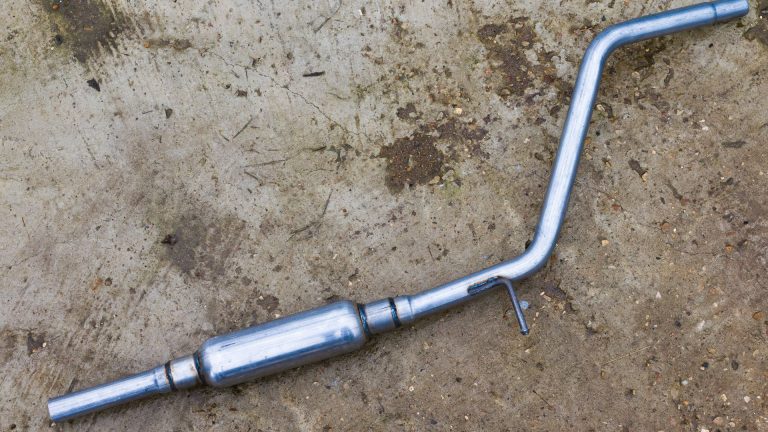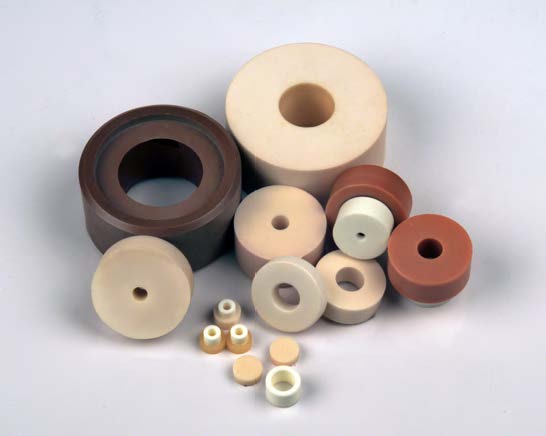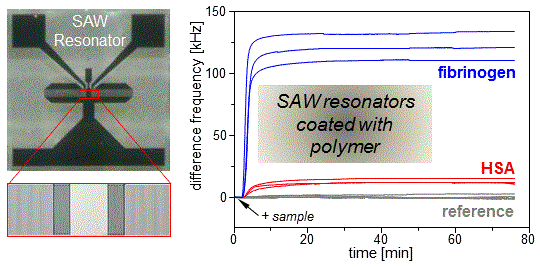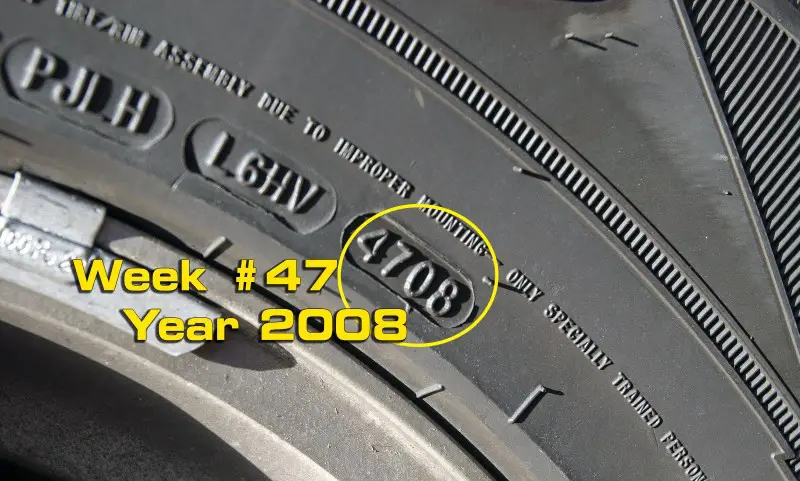How to Do a Resonator Delete? | Tips for Resonator Delete
You might be shocked to learn that your automobile or truck’s exhaust system comprises not only a muffler but also a resonator. Perhaps even two.
I recall hearing resonators on autos as long back as the 1950s. As a young automotive enthusiast, I noticed them on my father’s vehicles. “The resonator softens and changes the engine sound out the exhaust,” my father would explain. And he was correct.
Back then, resonators were situated between the muffler and the exhaust tip. Resonators have found a new home since those ancient times. They’re now mounted between the catalytic converter and the muffler. Let’s look at resonators to see what we can find out about them.
Resonator Delete

A resonator deletion is a modification or improvement that changes the route of your car’s exhaust pulses as they travel from the engine to the tailpipe. It seems and behaves like a massive echo chamber. Power output can be enhanced by removing the resonator, which allows for greater control of the harmonics of the pulses generated by the vehicle, resulting in improved overall performance.
It may raise the decibel level and harshness of the exhaust sound from your car. However, doing so helps to maintain top performance while also maximizing fuel economy and efficiency. A certain range of sound frequencies will be suppressed if your car has a resonator and you put your foot down on the throttle while keeping it in the appropriate spot.
This device can only filter out a limited range of audible frequencies from the generated sound waves. Each car produces a wide spectrum of sounds; those taken out of the final product are frequently those that the manufacturer believes buyers will find the most irritating. Most resonators’ principal function is to attenuate the harsh highs and piercing lows produced by your car’s exhaust system. These noises might be loud and buzzing, or they can have a high pitch that makes people ill to their stomachs or ears.
Your vehicle’s exhaust will generate a loud, unpleasant noise by using separate resonators. This distinct “blub, blub, blub” sound is produced by adjusting the Mustang’s resonator and muffler.
Also Read: How to Check Valve Stem Seals & Some Ways To Fix Them

A resonator wipe should take around an hour, so you won’t have to devote your entire day to it. If you have access to a resonator deletion kit, it will also help. Read the steps if you wish to get rid of something.
First, you must jack up the car.
Before you can remove the resonator, you must first raise your vehicle and secure it using jack stands. Make sure you have adequate space under the car to access whatever needs to be removed.
the placement of the resonator
- Raise your vehicle so you can easily get under it, and then look for the resonator where your catalytic converter used to be In your car’s exhaust system, the resonator comes before the muffler.
- Finally, cut the exhaust duct. To protect your eyes, ears, and hands, put on goggles, earplugs, and gloves. The tailpipe should be removed 2 inches ahead of the resonant frequency and 2 inches behind the resonator using the same saw blade.
- Please remove the resonator and unplug it from the exhaust system.
- Finally, remove the resonator. After cutting the pipe 2 inches in front of and 2 inches behind the resonator, remove it from beneath the automobile.
- Fifth, fuse the tailpipes together. The next step is to weld the exhaust pipes together. An exhaust clamp is attached with bolts at both ends after being used to keep the joints of the exhaust system together.
[i2pc show_title=”false” title=”Pros & Cons” show_button=”false” pros_title=”What You Like ” cons_title=”What You Dislike” ][i2pros]Resonator delete changes the car’s sound
It reduces the car’s weight
Resonator delete is legal in most states
It increases the horsepower and torque
The process is affordable
[/i2pros][i2cons]It could void your warranty
It can trigger the check engine light
Idling issues[/i2cons][/i2pc]
What is the difference between resonator delete and muffler delete?

The functions of resonator delete and muffler delete are what distinguishes them. The resonator and muffler are located in close proximity in the exhaust system. The resonator sits behind and complements the muffler.
As sound waves travel through the exhaust system, the resonator modifies and smoothes them before they reach the muffler. The muffler dampens the sound before it exits the exhaust pipe. The resonator and muffler work together to improve the sound and quietness of the vehicle.
Resonator removal alters the tone and pitch of a car’s exhaust noise, whereas muffler removal increases exhaust sound. Between the two, resonator delete is preferable since it produces less noise and pollutants.
Which Is Better – Muffler Delete or Resonator Delete?
The best exhaust modification is determined by the vehicle, local restrictions, and the driver’s objectives. Given that the performance gains afforded by muffler and resonator deletes are likely to be minor for some models, it seems sensible to prioritize the desired engine sound.
A muffler deletion is the most effective way to boost the volume of your car. A resonator deletion will not enhance volume but will alter the sound of your vehicle. A muffler and resonator deletion may be the way to go if you want to improve your exhaust.
How much does a resonator delete cost?
One of the benefits of a resonator delete is its low cost. If you go to an auto repair business, you may be charged between $100 and $220. The cost is determined by the car model you wish to change.
Because you will not be paying for labor, doing the removal yourself may be less expensive. The catch is that even attempting a resonator removal requires basic car maintenance knowledge. You must first jack the car, which we do not advocate doing at home if you have never done it before.
Types of Resonator
Resonator Delete Have Four Types which are Explained Below
Coaxial Resonator

Coaxial resonators (CROs) are used in filters, VCOs, and coaxial-resonator oscillators. This is a ceramic coaxial line resonator. Coaxial resonators operate as high-Q inductors in synthesizers when combined with a capacitor or varactor diode. A cylindrical center conductor and a roughly square exterior conductor characterize coaxial resonators. Half-wavelength and quarter-wavelength.
Open ends characterize coaxial resonators. There are two types of coaxial resonators. The high dielectric constant (r) of coaxial resonators may allow for smaller component sizes. r values are typically between 10 and 100. Integrated Microwave Corp. is one of many firms that sell ceramic coaxial resonators.
These resonators are excellent choices for oscillators, bandpass/bandstop filters, and EMI filtering. They are adaptable and can handle frequency requirements ranging from 200 MHz to 10 GHz. Customers can select from nine different sizes ranging from 2 to 18 mm.
IMC offers five different resonator materials. Ceramic coaxial line element coaxial resonators are available from Trans-Tech. These resonators are included in company coaxial line elements. There are seven sizes and four r values to choose from.
These resonators are sold by the company for use in UHF to 6 GHz applications. Ceramic coaxial resonators are available from Tusonix. The manufacturer provides four dimensions and four r values. They range from 800 MHz to 5.9 GHz. Oscillators, filters, and duplexers are examples of these components.
Dielectric Resonators

Dielectric resonators can be used in oscillators and filters to replace resonant cavities. The r value of this disc-shaped substance is high. Because of the large value of r, resonant cavity circuits can be substantially smaller than air-filled cavity fitness testing.
Because electromagnetic fields are primarily contained within a resonant cavity, high Q and low radiation losses are possible. The most common dielectric resonator mode is the transverse-electric mode, abbreviated as TE01. This allows a dielectric resonator to be magnetically connected to a circuit in a variety of ways. One possibility is to use a microstrip line and resonator. This method results in dielectric-resonator oscillators (DROs). Dielectric resonators are available from MCV Microwave.
Oscillators, microwave filters, combiners, and other satellite communication devices require these components. They support applications ranging from 261 MHz to 25 GHz. Dielectric and coaxial resonators are also available from Temex Ceramics. They are designed for use in telecommunication infrastructure, alarms and detection, military and space applications, and automobiles.
Resonators operate from 800 MHz to 50 GHz. There are six items available. Trans-Tech manufactures dielectric resonators for both commercial and military applications. Motion detectors, filters, and combiners for use in cellular base stations, DBS receivers, and other applications. They operate at frequencies ranging from 850 MHz to 32 GHz.
Ceramic Resonator

Quartz crystals could be replaced by ceramic resonators. Despite their lower precision, ceramic resonators have advantages over quartz crystals. They can be produced in smaller, less expensive containers. They also begin more quickly than quartz crystals. Physical reverberation (PZT) of lead zirconium titanate (PZT) is used in ceramic resonators.
Two copper electrodes are evenly positioned on top and bottom of the substrate material. The substrate is moved between electrodes by voltage. The frequency of resonance is affected by the thickness of the substrate. The electrical currents in ceramic resonators are similar to those in piezoelectric crystals. Its versatility allows it to be employed in synthesizer setups such as crystals. Murata manufactures ceramic resonators in the CERALOCK Series. Medical/healthcare devices, personal computers, communications, and vehicular electronics all employ these goods. Ceramic resonators are manufactured by Oscilent and Abracon.
Saw Resonators

Information can be transferred by SAWs moving across the top of a piezoelectric crystal. A basic SAW resonator with a dielectric layer transmitter and two grating reflectors is created using photolithography on piezoelectric material. This resonator is held in place by a piezoelectric material.
The transducer connects the reflectors’ harmonic cavity to the open circuit. SAW resonators, like crystal resonators, are employed in higher-frequency oscillators. Bandpass filters can also be sold by Qorvo, Phonon, and Vectron. Crystal resonator LC circuits are interchangeable. SAW resonators are used in remote keyless entry (RKE) devices, surveillance systems, and garage door openers. SAW resonators are sold by ECS Inc. International. Select from external or through-hole packing.
SAW resonators are sold by the company for security and remote control. Murata’s SAW resonators have center frequency tolerances as low as 50 kHz despite covering a frequency range of 300 MHz to 1 GHz. The packing of the resonator varies. Abracon provides SAW resonant frequencies ranging from 116.2 to 917.5 MHz.
These items are used in wireless remote controllers and mobile communications. Select from external or through-hole packing. SAW resonators ranging in frequency from 100 MHz to 1.1 GHz are available from Golledge Electronics. There are several package variants available. Special requests will be considered.

